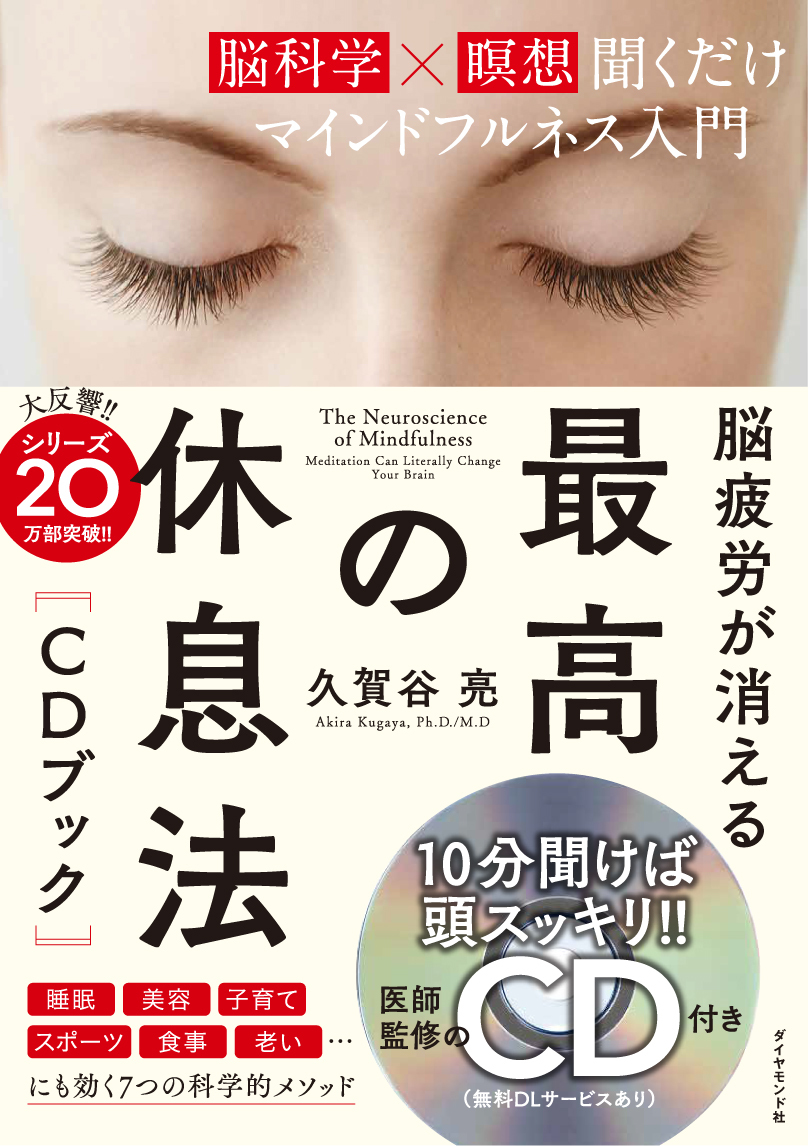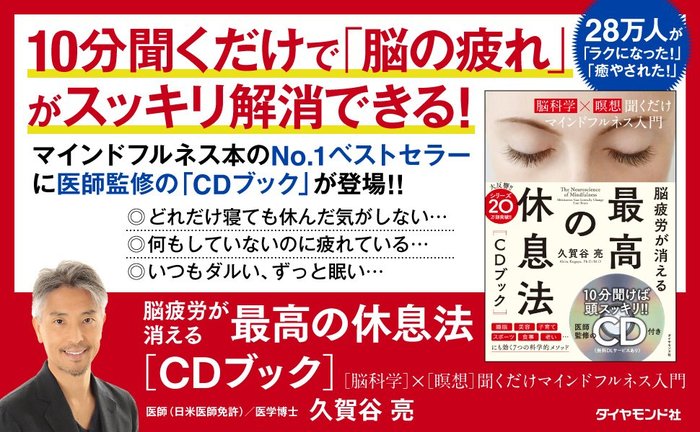厄介なのは「疲れ」よりも「疲れた感じ」
脳疲労の原因となる心のストレス反応についてお話ししてきましたが、それ以前に、やはり身体が疲れているという方もいらっしゃるでしょう。
身体の疲労についての科学的な研究データはまだ十分ではありませんが、近年では、肉体の疲労も疲労感という「脳の現象」としてアプローチされるようになりつつあります。
疲労感の解消に欠かせないのはやはり運動です。運動によって人間の脳が変わることもよく知られています*02。
たとえば、平均60代後半の人たちが、40分ほどの有酸素運動(速歩)を1年続けたところ、記憶を司る海馬の容積が2%増加しました。運動によって脳年齢が1~2歳は若返ったわけですから驚きです*03。
また、慢性疲労症候群(強い疲労感が長期間にわたって消えない病気)の患者さんを対象にしたメタ解析では、運動指導と同じくらいの有効性がカウンセリングにも認められています*04。
重い疲労感を伴うことで知られる線維筋痛症や多発性硬化症といった疾患でも、うつ病と同じ左前頭葉へのTMS磁気治療が効果を発揮したり*05、マインドフルネスが疲労感を軽減したりといった報告があります*06。
以上を踏まえれば、身体の疲れすらも、休息のメインステージはやはり脳なのだと言えそうです。暑い夏がやってくる前のこの時期、ぜひストレスや疲労とのつき合い方を見直してみてください。
*02 Cooney, Gary M., et al. (2014) “Exercise for depression.” JAMA 311.23: 2432-2433.
Rethorst, Chad D., et al. (2009) “The antidepressive effects of exercise.” Sports Medicine 39.6: 491-511.
*03 Erickson, Kirk I., et al. (2011) “Exercise training increases size of hippocampus and improves memory.” Proceedings of the National Academy of Sciences 108.7: 3017-3022.
*04 Smith, ME Beth, et al. (2015) “Treatment of myalgic encephalomyelitis/chronic fatigue syndrome: a systematic review for a National Institutes of Health Pathways to Prevention Workshop.” Annals of Internal Medicine 162.12: 841-850.
*05 Knijnik, Leonardo M., et al. (2016) “Repetitive Transcranial Magnetic Stimulation for Fibromyalgia: Systematic Review and Meta-Analysis.” Pain Practice: the official journal of World Institute of Pain 16.3: 294-304.
Palm, Ulrich, et al. (2014) “Non-invasive brain stimulation therapy in multiple sclerosis: a review of tDCS, rTMS and ECT results.” Brain Stimulation 7.6: 849-854.
Tendler, Aron, et al. (2014) “Deep Repetitive Transcranial Magnetic Stimulation (dTMS) for Multiple Sclerosis (MS) Fatigue, Irritability and Parasthesias: Case Report.” Brain Stimulation: Basic, Translational, and Clinical Research in Neuromodulation 7.5: e24-e25.
*06 Simpson, Robert, et al. (2014) “Mindfulness based interventions in multiple sclerosis-a systematic review.” BMC Neurology 14.1.
Rethorst, Chad D., et al. (2009) “The antidepressive effects of exercise.” Sports Medicine 39.6: 491-511.
*03 Erickson, Kirk I., et al. (2011) “Exercise training increases size of hippocampus and improves memory.” Proceedings of the National Academy of Sciences 108.7: 3017-3022.
*04 Smith, ME Beth, et al. (2015) “Treatment of myalgic encephalomyelitis/chronic fatigue syndrome: a systematic review for a National Institutes of Health Pathways to Prevention Workshop.” Annals of Internal Medicine 162.12: 841-850.
*05 Knijnik, Leonardo M., et al. (2016) “Repetitive Transcranial Magnetic Stimulation for Fibromyalgia: Systematic Review and Meta-Analysis.” Pain Practice: the official journal of World Institute of Pain 16.3: 294-304.
Palm, Ulrich, et al. (2014) “Non-invasive brain stimulation therapy in multiple sclerosis: a review of tDCS, rTMS and ECT results.” Brain Stimulation 7.6: 849-854.
Tendler, Aron, et al. (2014) “Deep Repetitive Transcranial Magnetic Stimulation (dTMS) for Multiple Sclerosis (MS) Fatigue, Irritability and Parasthesias: Case Report.” Brain Stimulation: Basic, Translational, and Clinical Research in Neuromodulation 7.5: e24-e25.
*06 Simpson, Robert, et al. (2014) “Mindfulness based interventions in multiple sclerosis-a systematic review.” BMC Neurology 14.1.









